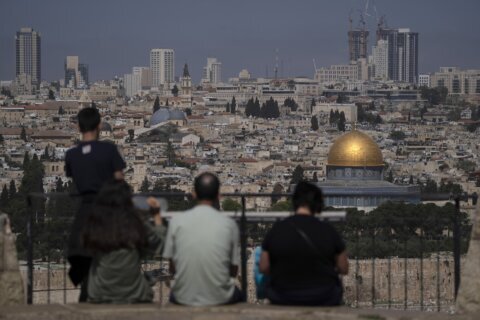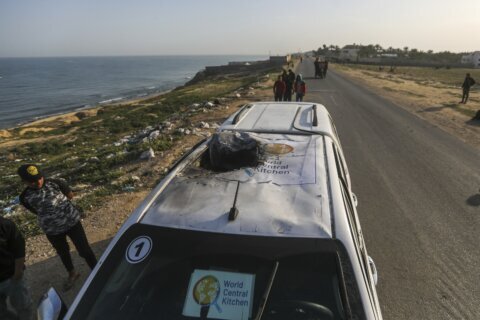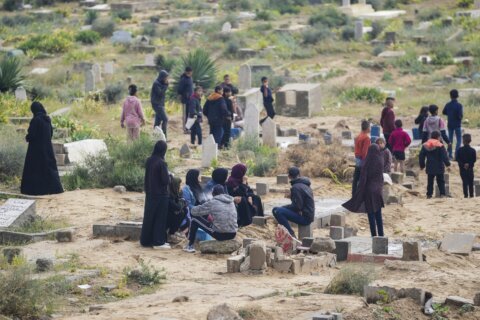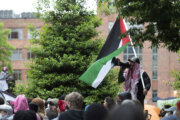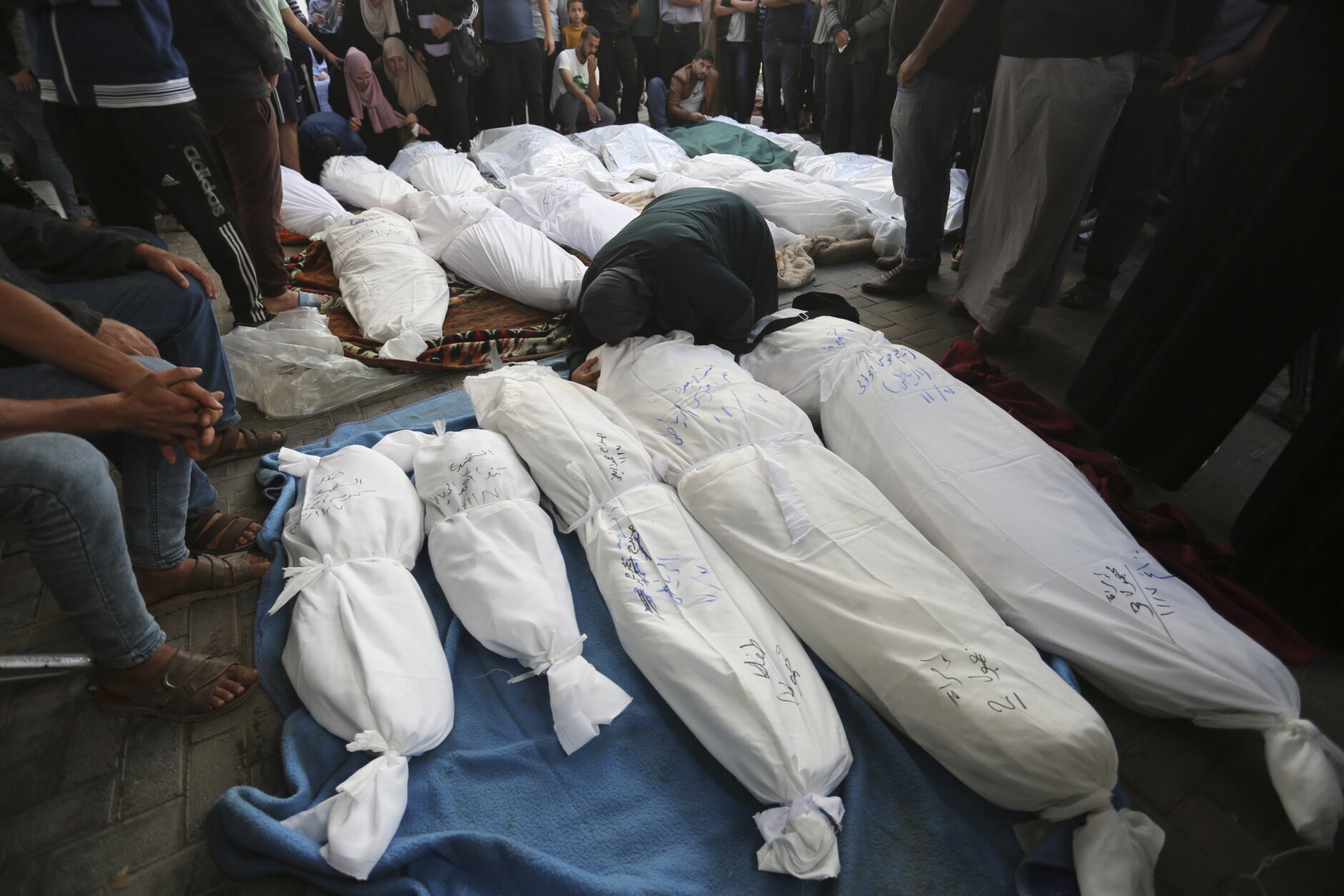
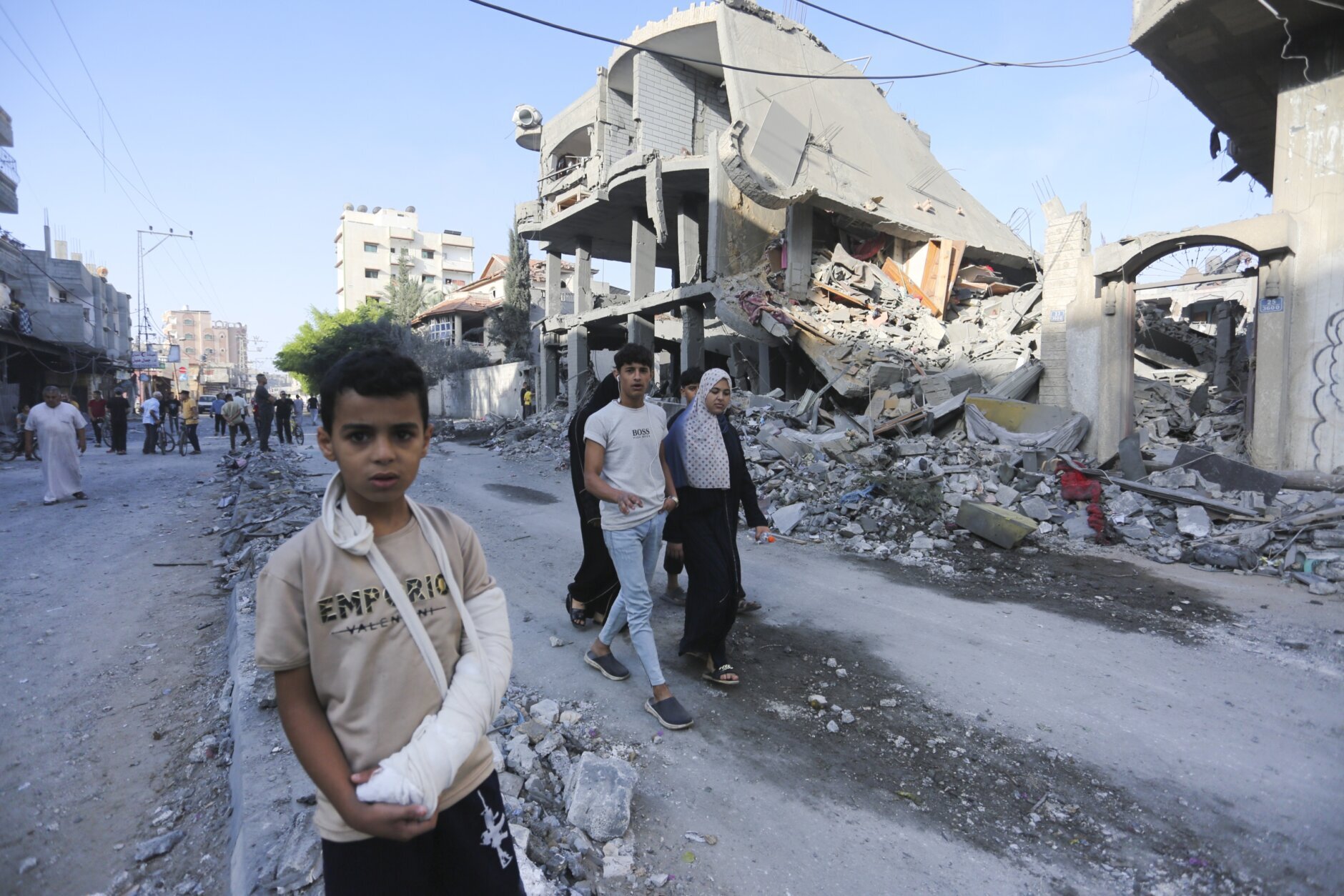
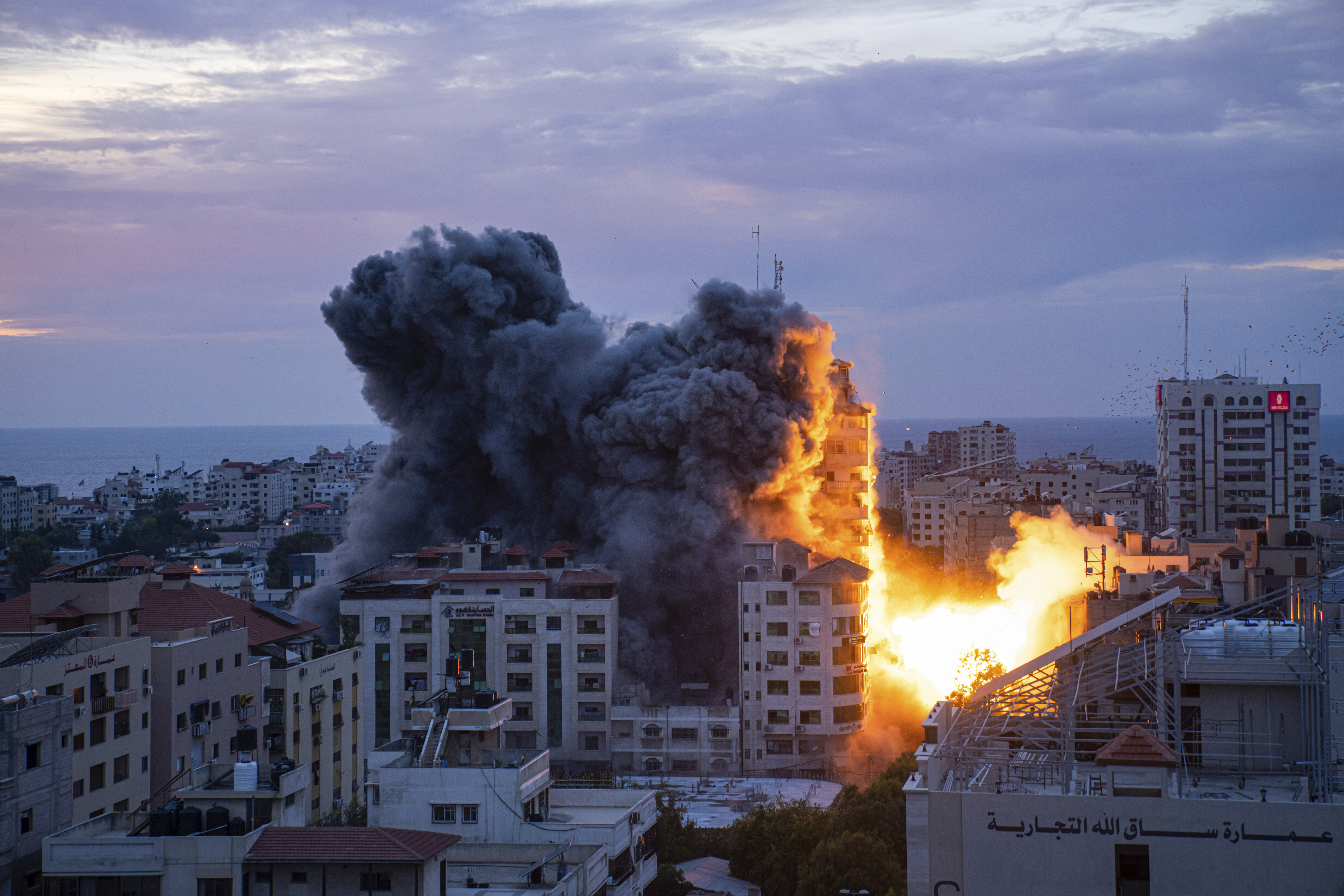
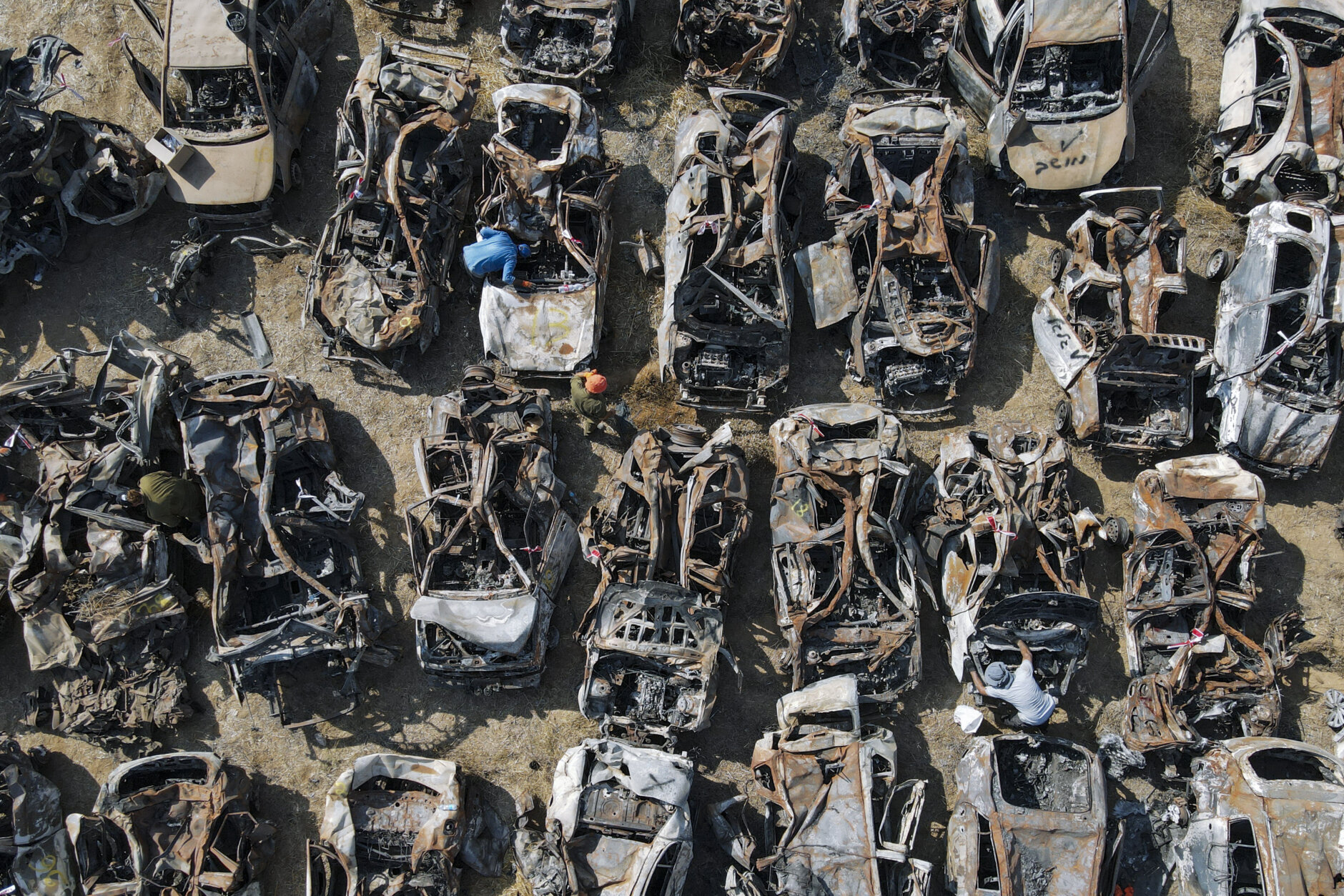
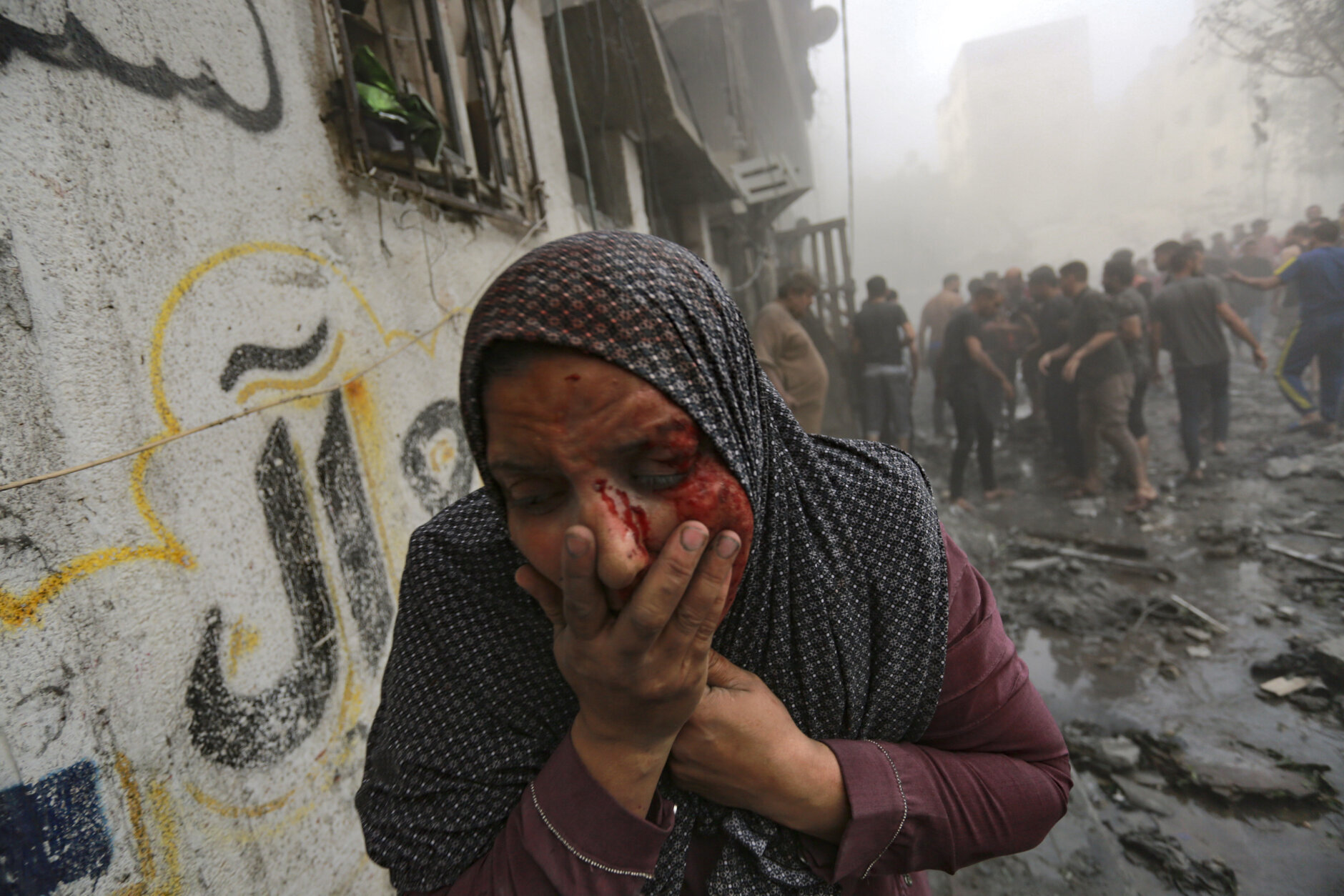
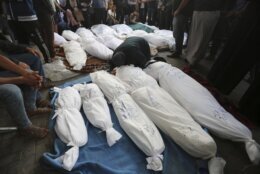
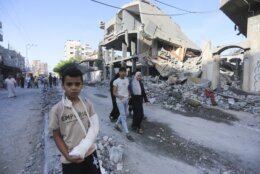

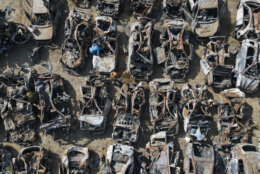
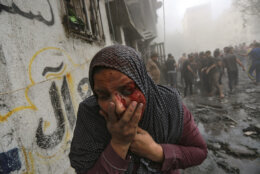
KHAN YOUNIS, Gaza Strip (AP) — Israeli ground forces were battling Hamas fighters deep inside Gaza’s largest city, Israel said Tuesday. The push signals a major new stage in the month-old conflict, and its leaders foresee controlling the enclave’s security after the war.
The push into Gaza City guarantees that the already staggering death toll will rise further, while comments from Prime Minister Benjamin Netanyahu about controlling Gaza’s security for “an indefinite period” pointed to the uncertain endgame of a war that Israel says will be long and difficult.
Israeli ground troops have battled Palestinian militants inside Gaza for over a week, cutting the territory in half and encircling Gaza City. The army’s chief spokesperson, Rear Adm. Daniel Hagari, said Israeli ground forces “are located right now in a ground operation in the depths of Gaza City and putting great pressure on Hamas.”
Hamas spokesperson Ghazi Hamad, speaking Tuesday from Beirut, denied that Israeli forces were making any significant military gains or that they had advanced deep into Gaza City.
“They never give the people the truth,” Hamad said. He added that numerous Israeli soldiers were killed Monday and “many tanks were destroyed.”
“The Palestinians fight and fight and fight against Israel, until we end the occupation,” said Hamad, who left Gaza days before Hamas’ Oct. 7 incursion in southern Israel, which sparked the war.
The Associated Press could not independently verify the claims of either side.
Israelis commemorated the 30th day — a milestone in Jewish mourning — since the Hamas incursion, which killed 1,400 people. About 240 people Hamas abducted during the attack remain in Gaza, and more than 250,000 Israelis have evacuated homes near the borders of Gaza and Lebanon as rockets were continuously fired into Israel.
Hundreds of family members of the hostages held in Gaza joined supporters Tuesday beside the Western Wall in Jerusalem to call for the release of their loved ones.
“The hostages have been underground in Gaza for 32 days. I cry out to every single person here and every single person on the planet to make it your mission to free these souls,” said Rachel Goldberg, a prominent spokesperson for the hostage families, her voice breaking.
A month of relentless bombardment in Gaza since the Hamas attack has killed more than 10,300 Palestinians — two-thirds of them women and minors, according to the Health Ministry of the Hamas-run territory. More than 2,300 are believed to be buried from strikes that reduced entire city blocks to rubble.
Around 70% of Gaza’s 2.3 million people have fled their homes, and many of them are crowded into schools-turned-shelters run by the United Nations. Civilians in Gaza are relying on a trickle of aid and their own daily foraging for food and water from supplies that have dwindled after weeks of siege.
FLEEING SOUTH
Israel unleashed another wave of strikes across the Gaza Strip on Tuesday as hundreds more Palestinians fled Gaza City to the south.
Some arrived on donkey carts, most on foot, some pushing elderly relatives in wheelchairs, all visibly exhausted. Many had nothing but the clothes on their backs.
Hundreds of thousands have heeded Israeli orders to head to the southern part of Gaza, out of the ground assault’s path. Others are afraid to do so since Israeli troops control part of the north-south route. Bombardment of the south has also continued.
An Israeli airstrike destroyed several homes early Tuesday in Khan Younis. An Associated Press journalist at the scene saw first responders pulling five bodies — including three dead children — from the rubble. One man wept as he carried a bloodied young girl, until a rescue worker pried her from his arms, saying, “Let her go, let her go,” to rush her to an ambulance.
AP video at a nearby hospital showed a woman desperately searching for her son, then crying and kissing him when she found him, half-naked and bloodied, but apparently without serious injuries. A girl sobbed next to a baby on a stretcher, apparently dead.
“We were sleeping — babies, children, elderly,” said one survivor, Ahmad al-Najjar, who is the general director at the Education Ministry in Gaza.
In the town of Deir al-Balah, rescue workers brought out at least four dead and a number of wounded children from the wreckage of a flattened building, witnesses said.
Israel says it targets Hamas fighters and infrastructure and accuses the group of endangering civilians by operating among them.
At a school in Khan Younis, thousands of displaced people were living in classrooms and on the playground. One of them, Suhaila al-Najjar, said the past month was filled with sleepless nights.
“What’s to come? How will we live? Bakeries have closed, there’s no gas. What will we eat?” she said.
ISRAEL TO MAINTAIN CONTROL
Israel has vowed to remove Hamas from power and crush its military capabilities — but neither Israel nor its main ally, the United States, has said what would come next.
Netanyahu told ABC News that Gaza should be governed by “those who don’t want to continue the way of Hamas,” without elaborating.
“I think Israel will, for an indefinite period, will have the overall security responsibility because we’ve seen what happens when we don’t have it. When we don’t have that security responsibility, what we have is the eruption of Hamas terror on a scale that we couldn’t imagine,” he said.
Netanyahu did not make clear what shape that security control would take. The White House reiterated Tuesday that President Joe Biden does not support an Israeli reoccupation of the Gaza Strip after the war.
“We do think that there needs to be a healthy set of conversations about what post-conflict Gaza looks like and what governance looks like,” said White House National Security Council spokesperson John Kirby, adding that he would leave it to Netanyahu to clarify what he means by “indefinite.”
Israeli officials say the offensive against Hamas will last for some time and acknowledge that they have not yet formulated a concrete plan for what comes after the war. The defense minister has said Israel does not seek a long-term reoccupation of Gaza but predicted a lengthy phase of low-intensity fighting against “pockets of resistance.” Other officials have spoken about establishing a buffer zone that would keep Palestinians away from the Israeli border.
“There are a number of options being discussed for The Day After Hamas,” said Ophir Falk, a senior adviser to Netanyahu. “The common denominator of all the plans is that 1) there is no Hamas 2) that Gaza is demilitarized 3) Gaza is deradicalized.”
Israel withdrew troops and settlers in 2005 but kept control over Gaza’s airspace, coastline, population registry and border crossings, excepting one into Egypt. Hamas seized power from forces loyal to President Mahmoud Abbas in 2007, confining his Palestinian Authority to parts of the occupied West Bank. Since then, Israel and Egypt have imposed a blockade on Gaza to varying degrees.
In his ABC interview, Netanyahu also expressed openness for the first time to “little pauses” in the fighting to facilitate delivery of aid to Gaza or the release of hostages. But he ruled out any general cease-fire without the release of all the hostages.
HEAVY FIGHTING IN THE NORTH
For now, Israel’s troops are focused on northern Gaza, including Gaza City, which before the war was home to about 650,000 people. Israel says Hamas has extensive militant infrastructure within residential areas, including a vast tunnel network.
Israel’s military says it has killed thousands of Hamas fighters. The Gaza Health Ministry’s death toll does not distinguish between civilians and combatants — and slain fighters not brought to hospitals would not be in its count. Israel also says 30 of its soldiers have been killed in Gaza since the ground offensive began.
Several hundred thousand people are believed to still be in the north, in the assault’s path.
Residents in northern Gaza reported heavy battles overnight into Tuesday morning on the outskirts of Gaza City. The Shati refugee camp — a built-up district housing refugees from the 1948 war and their descendants — has been heavily bombarded over the past two days, residents said.
The latest war has also stoked wider tensions, with Israel and Lebanon’s Hezbollah militant group trading fire along the border. More than 160 Palestinians have been killed in the West Bank since the war began, mainly during violent protests and gunbattles with Israeli forces during arrest raids.
Hundreds of trucks carrying aid have been allowed to enter Gaza from Egypt since Oct. 21. But humanitarian workers say the aid is far short of mounting needs. Egypt’s Rafah crossing has also opened to allow hundreds of foreign passport holders and medical patients to leave Gaza.
Philippine President Ferdinand Marcos Jr. said 40 Filipinos fled from Gaza into Egypt through the Rafah crossing after Filipino diplomats negotiated for their safe passage. The Filipinos were expected to take flights back to the Philippines from the Egyptian capital of Cairo, Marcos said in a video message in Manila. Most of at least 134 Filipinos in Gaza, many of whom are Filipinas married to Palestinians, have sought help to leave the besieged territory, the Department of Foreign Affairs in Manila said.
___
Magdy reported from Cairo. Associated Press writers Amy Teibel in Jerusalem and Michael Biesecker in Washington contributed to this report.
___
Full AP coverage at https://apnews.com/hub/israel-hamas-war
Copyright © 2024 The Associated Press. All rights reserved. This material may not be published, broadcast, written or redistributed.

